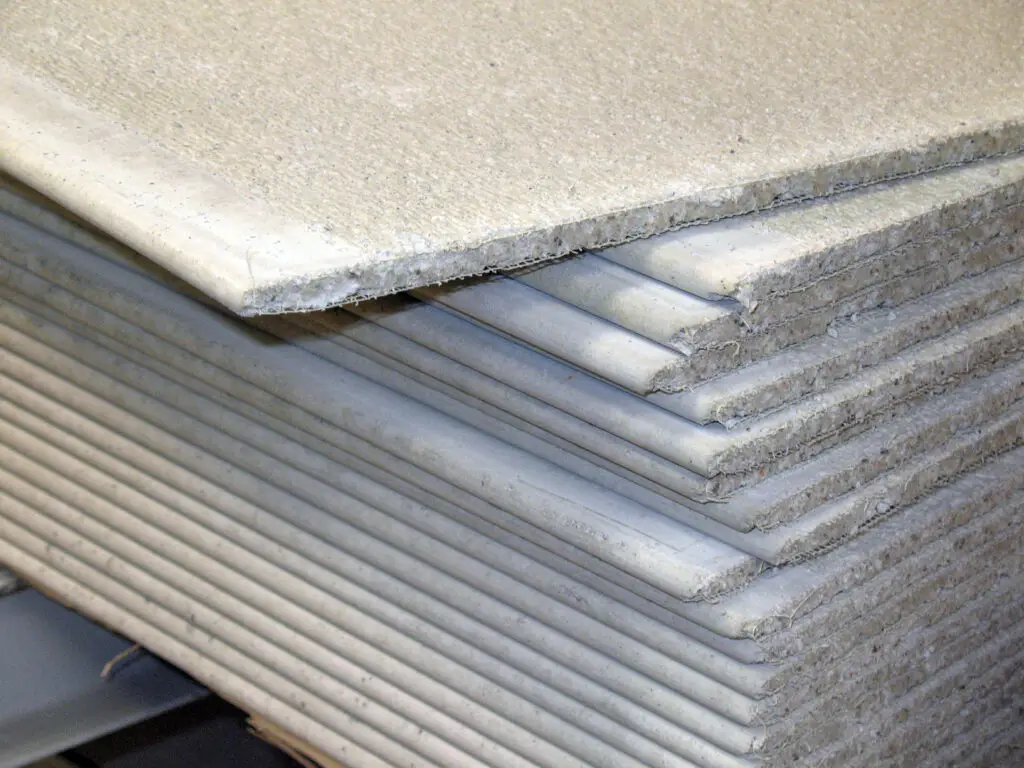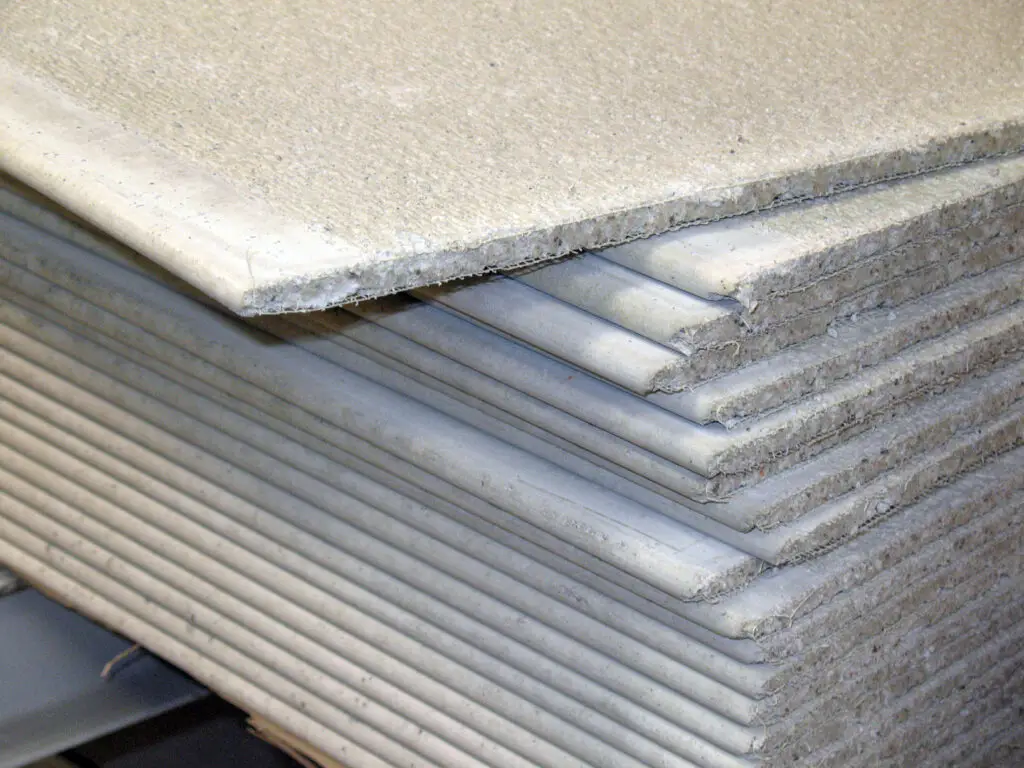If you’re planning a home renovation project that involves tiling, you may be wondering which type of board to use as an underlayment. Backer board and cement board are two options commonly used for this purpose.
In this article, we’ll take a closer look at the differences between these two materials to help you make an informed decision.
What is Backer Board?

Backer board is a type of cement board that is specifically designed for use in wet areas, such as bathrooms and kitchens.
It is made of cement and a combination of reinforcing fibers, such as fiberglass, which makes it highly resistant to moisture and mold.
Backer board comes in various thicknesses and sizes to accommodate different tile types and installation needs.
What is Cement Board?

Cement board, on the other hand, is a type of board made of cement and fiber.
While it is also moisture-resistant, it is not designed specifically for wet areas like backer board.
Cement board is typically used as an underlayment for tile floors, walls, and countertops. It is also sometimes used as a base for stucco or other exterior finishes.
Bucker Board vs Cement Board- Pros and Cons
Backer board pros:
- Highly moisture-resistant
- Specifically designed for wet areas
- Strong and durable
Backer board cons:
- Slightly more expensive than cement board
Cement board pros:
- Can handle heavier loads
- Suitable for floors and countertops
- Moisture-resistant
Cement board cons:
- Not specifically designed for wet areas like backer board
Strength and Durability
When it comes to strength and durability, both backer board and cement board are excellent choices.
Cement board is known for its ability to handle heavier loads, making it a great option for floors and countertops.
Backer board, on the other hand, is specifically designed to provide stability and moisture resistance in wet areas. Both materials are strong and durable enough to handle the weight of most tiles.
Moisture Resistance
While both backer board and cement board are moisture-resistant, backer board has the edge in wet areas. Its combination of cement and reinforcing fibers makes it highly resistant to water and mold.
If you’re tiling a bathroom or kitchen, backer board is definitely the better choice.
Ease of Installation
Both backer board and cement board can be installed by a professional or a skilled DIYer.
However, it’s important to follow the manufacturer’s instructions and recommendations for proper installation and use.
Some people find backer board easier to cut and work with due to its reinforcing fibers, but this can also make it slightly more expensive than cement board.
Which One Should You Choose?
The choice between backer board and cement board ultimately comes down to the specific needs of your project. If you’re working in a wet area, such as a bathroom or kitchen, backer board is the way to go.
Its superior moisture resistance will provide the stability and protection your tiles need.
However, if you’re working on a floor or countertop, cement board may be a better option due to its ability to handle heavier loads. Consult with a professional if you’re unsure which material to use.
Which One is Better: Cement Board or Backer Board?
It really depends on what you need. Cement board is more durable and can handle heavier loads, so it’s a good choice for floors and countertops.
But if you’re working in a wet area, like a bathroom or kitchen, backer board might be the better choice because it can resist moisture and mold better.
What is Backer Board’s Strength?
Backer board is strong and durable, and it can handle heavy loads. It’s specifically made to give a stable and moisture-resistant base for your tiles, which can be heavy and stress out the structure underneath.
But keep in mind that the strength of the backer board depends on the specific type and thickness you use.
Always follow the manufacturer’s instructions and recommendations for installation and use to ensure maximum strength and durability
What are the Uses of Cement Board and Backer Board?
Cement board and backer board are building materials commonly used in home construction and renovation projects. Here are some of their uses.
Cement Board Uses
- Underlayment for Tile Cement board is often used as an underlayment for tile flooring, walls, and countertops. It provides a stable and durable base that can handle the weight of the tiles.
- Exterior Finishes Cement board can also be used as a base for stucco and other exterior finishes. Its durability and resistance to moisture make it a good choice for outdoor use.
- Fire Protection Cement board can provide fire protection when used as a sheathing material for walls or as a base for fire-resistant materials.
Backer Board Uses
- Underlayment for Tile in Wet Areas Backer board is specifically designed for use in wet areas like bathrooms, kitchens, and laundry rooms. It provides a moisture-resistant base for tile that can help prevent mold and water damage.
- Exterior Applications Backer board can also be used as a base for exterior finishes in areas where moisture is a concern.
- Soundproofing Backer board can be used as a soundproofing material when installed between walls or floors.
FAQs
Q: What is cement board made of?
A: Cement board is made of cement and fiber.
Q: What is backer board made of?
A: Backer board is made of cement and reinforcing fibers, such as fiberglass.
Q: Can cement board be used in wet areas?
A: While cement board is moisture-resistant, it is not specifically designed for wet areas. Backer board is a better choice for wet areas.
Q: Can backer board be used for non-tile applications?
A: Backer board is primarily designed for use as a base for tiles, but it can also be used for exterior finishes and as a soundproofing material.
Q: What is the difference between cement board and backer board?
A: While both are made of cement and fiber, backer board is specifically designed for use in wet areas and provides better moisture resistance. Cement board is more durable and can handle heavier loads.
Q: Can cement board or backer board be used as a fire barrier?
A: Cement board can provide fire protection when used as a sheathing material or as a base for fire-resistant materials. Backer board does not have fire-resistant properties.
Q: Is it easy to install cement board and backer board?
A: Both cement board and backer board can be installed by a professional or a skilled DIYer. However, it is important to follow the manufacturer’s instructions and recommendations for proper installation and use.
Q: How do I know which board to use for my project?
A: The choice between cement board and backer board will depend on the specific needs of your project. Consider factors such as moisture resistance, durability, and weight requirements when making your decision. It may also be helpful to consult with a professional to determine the best option for your project.





